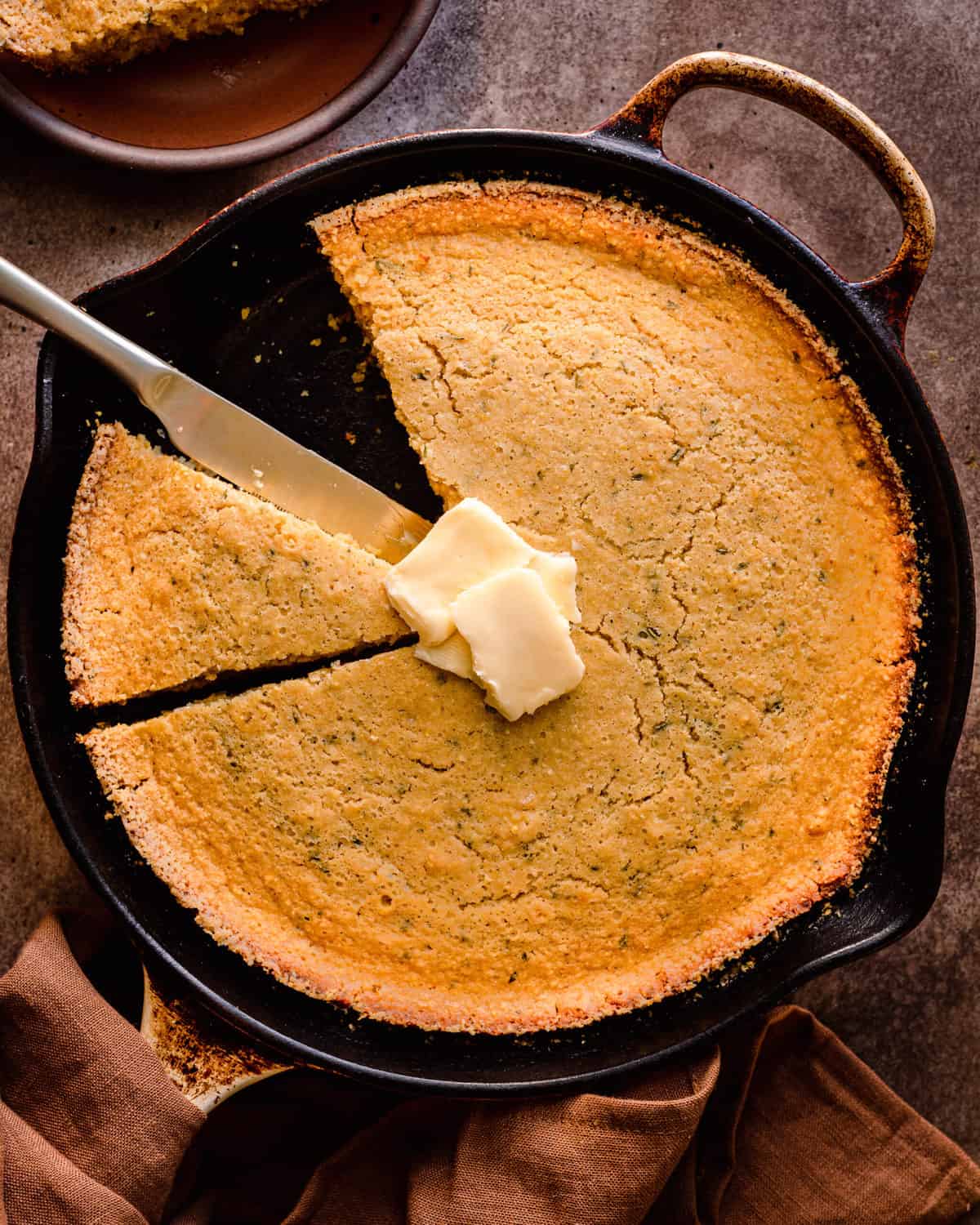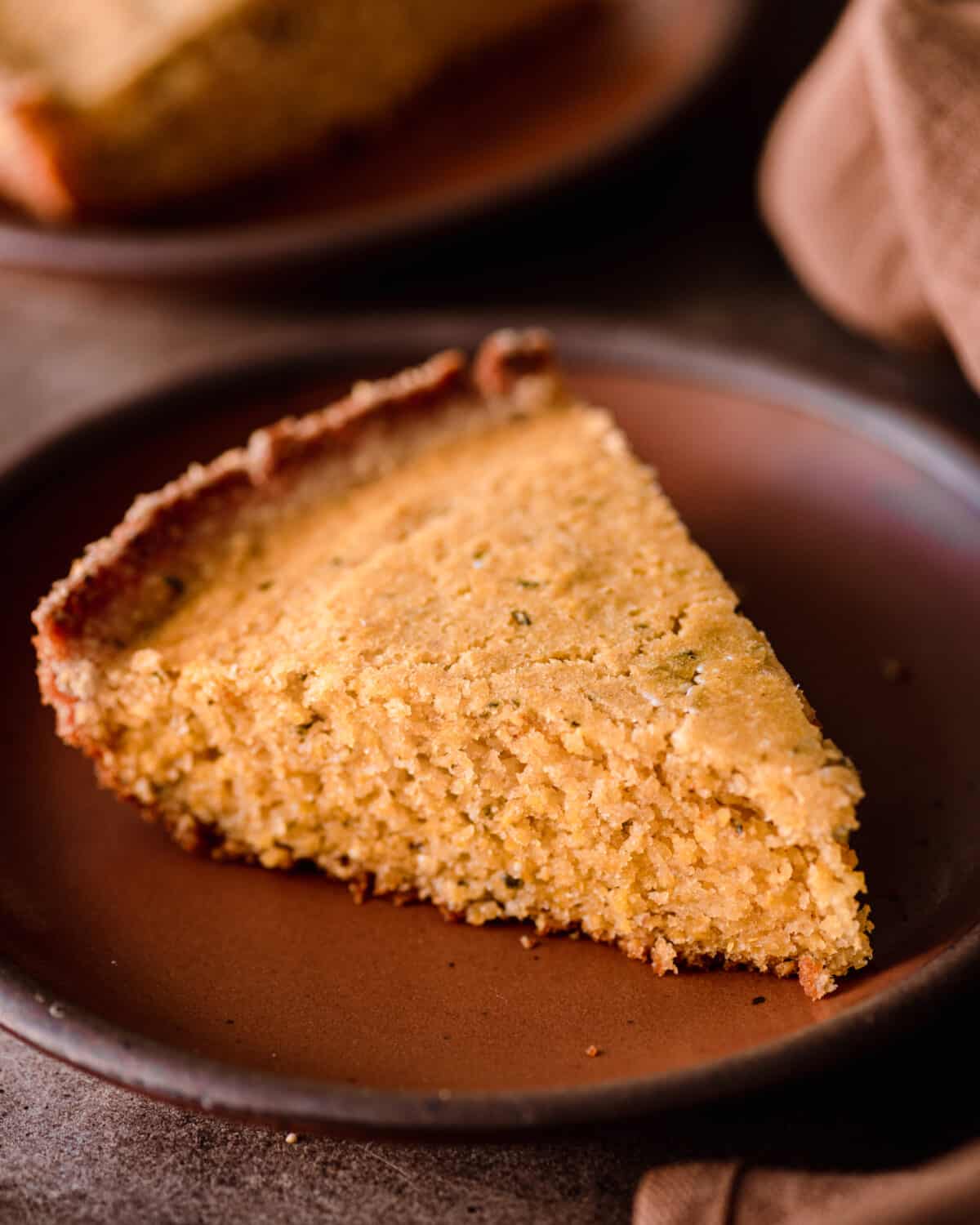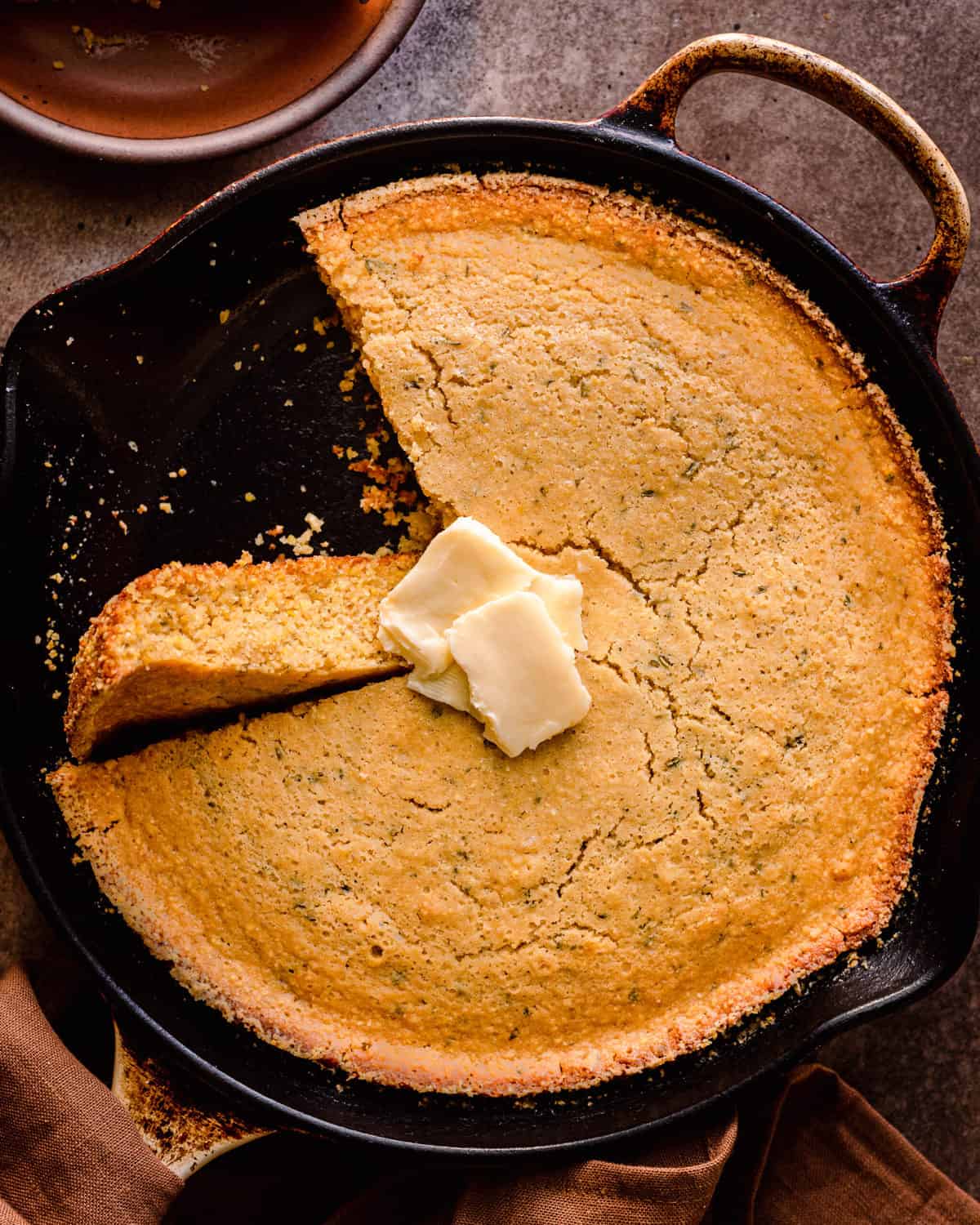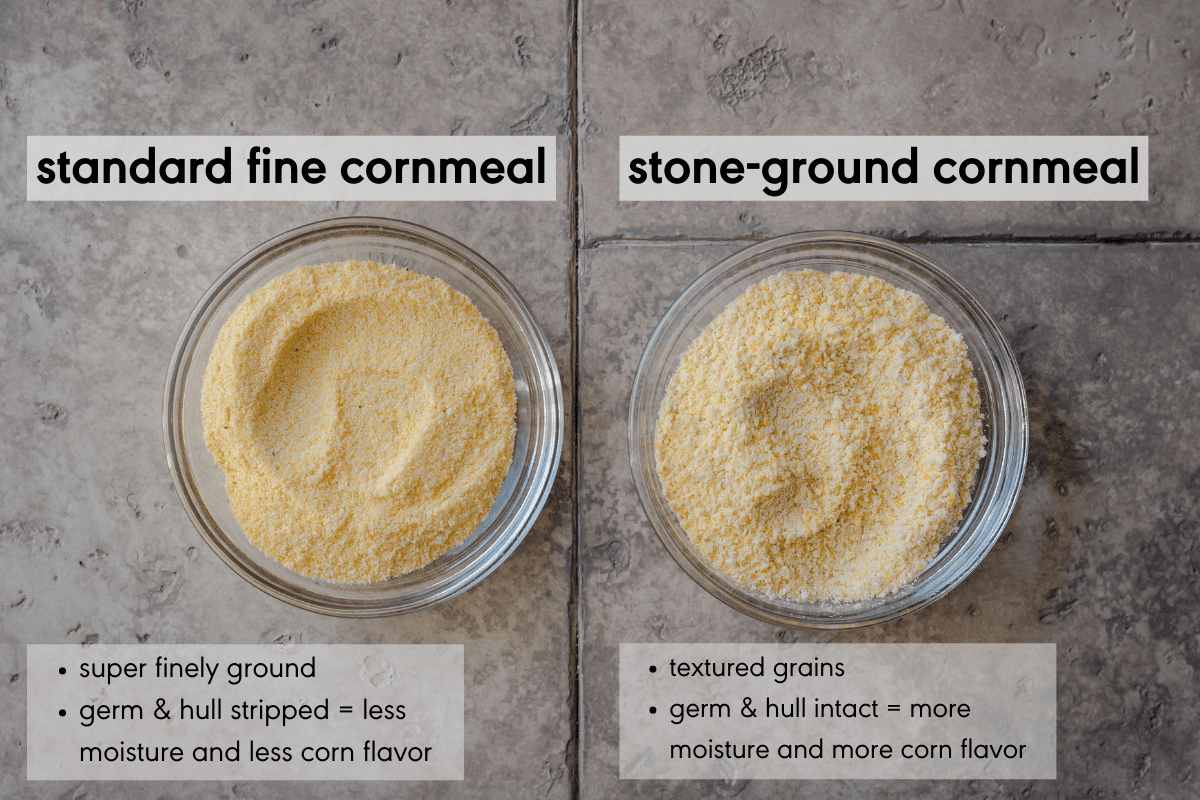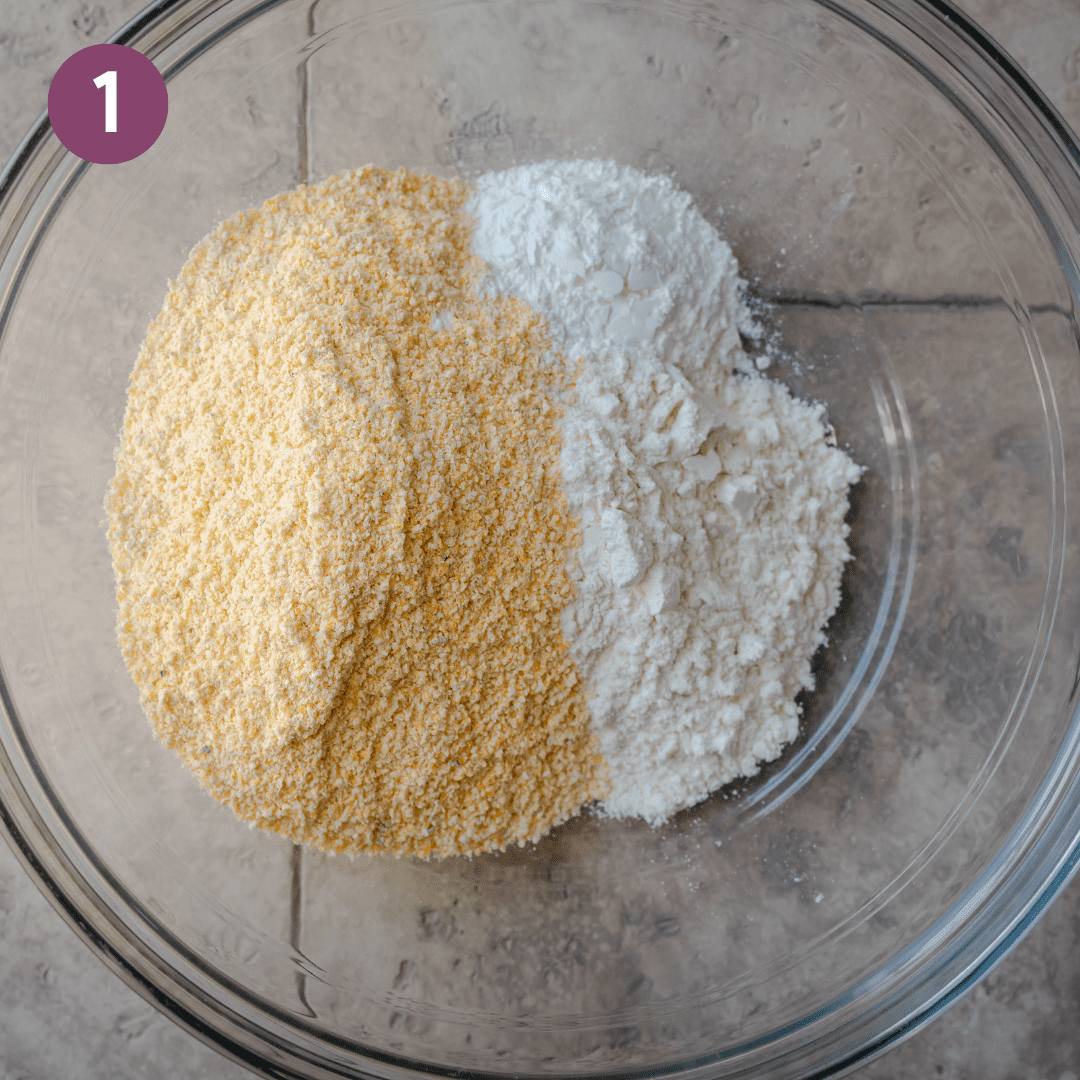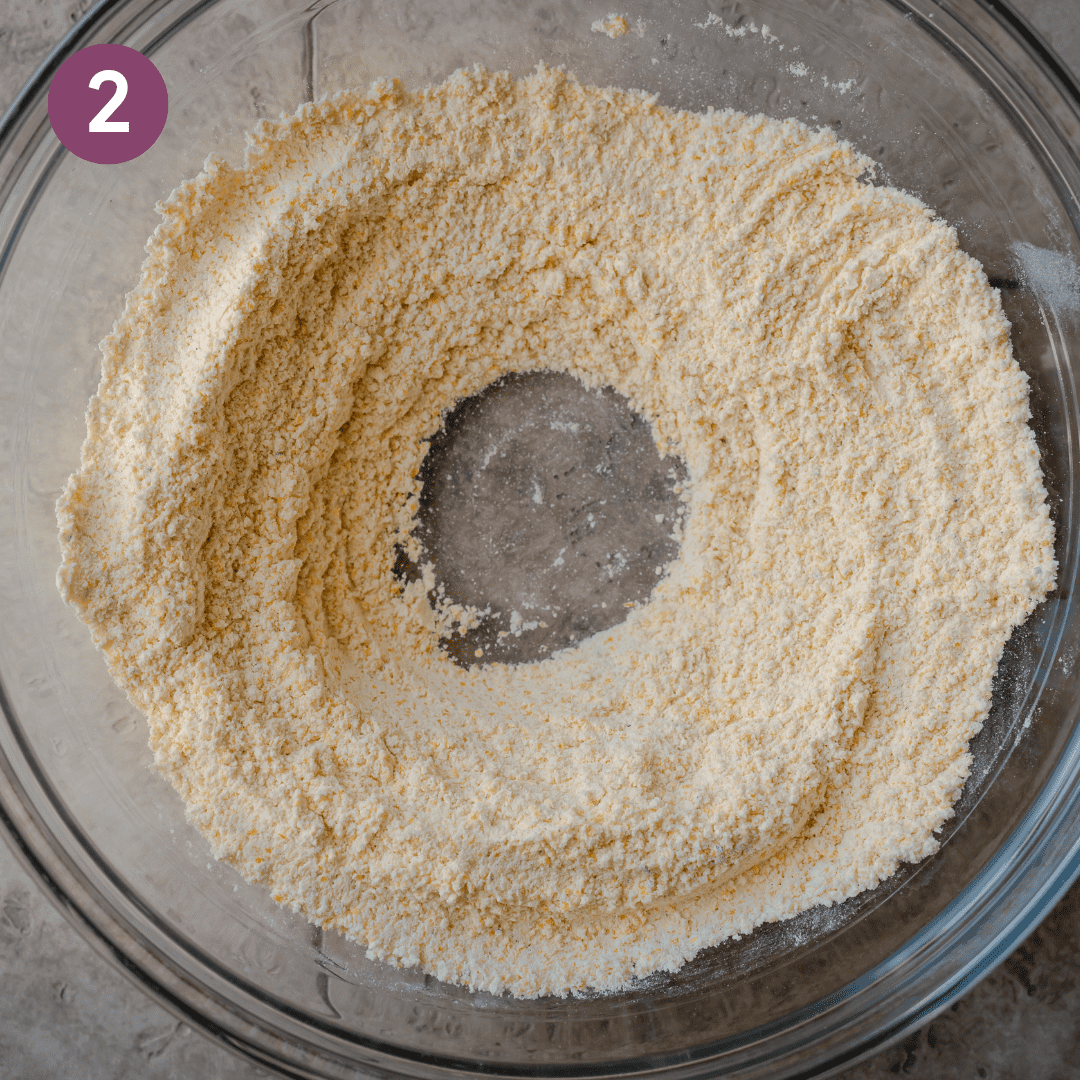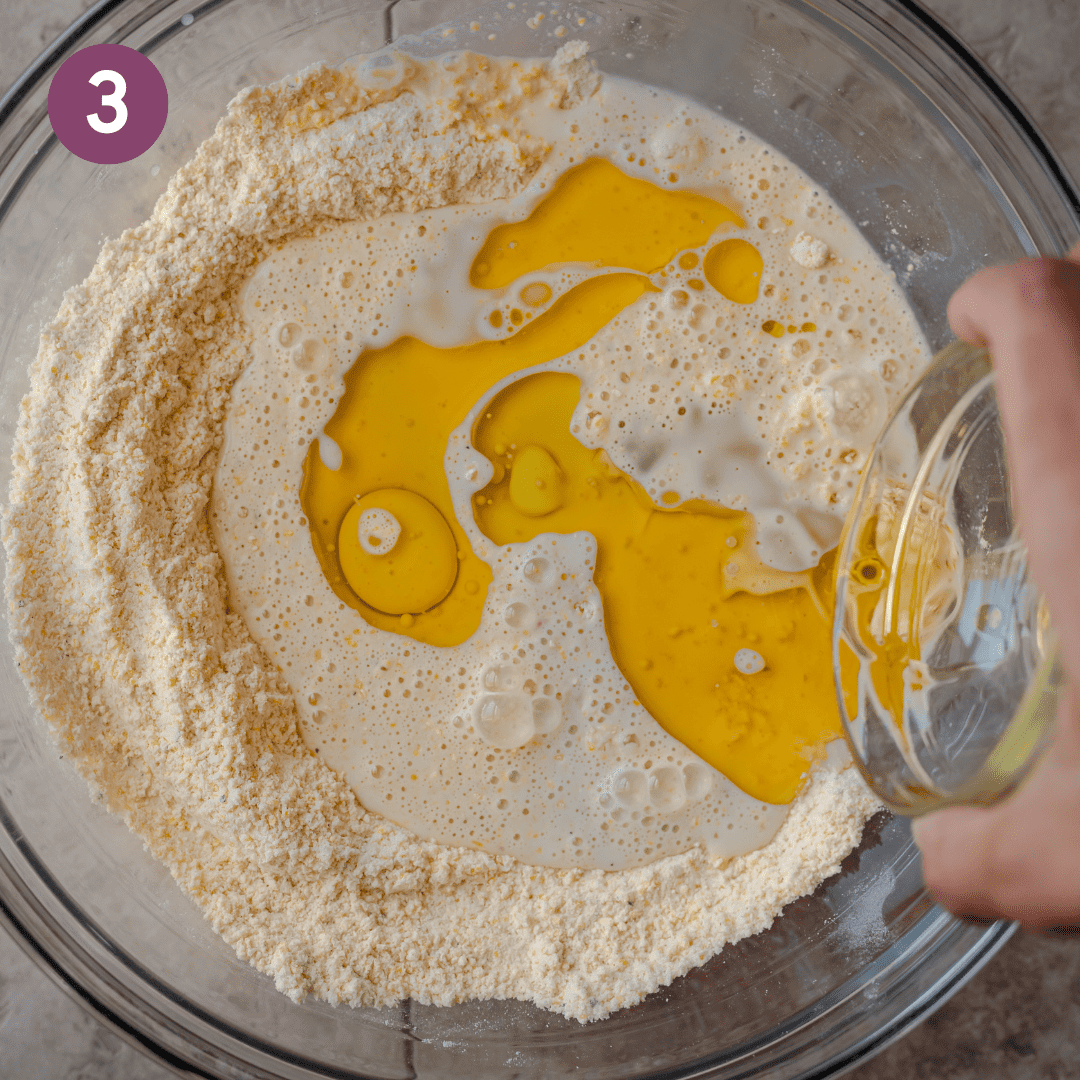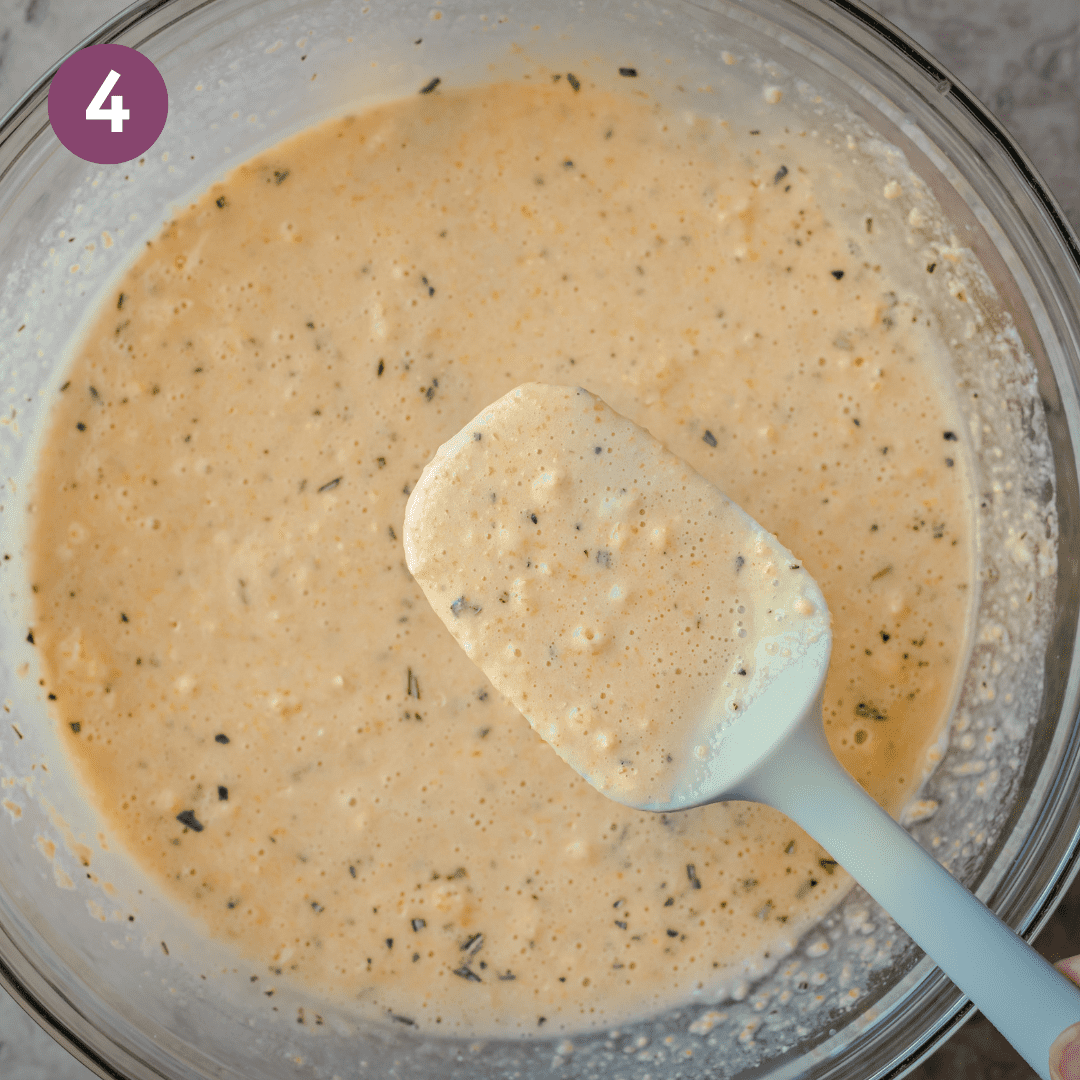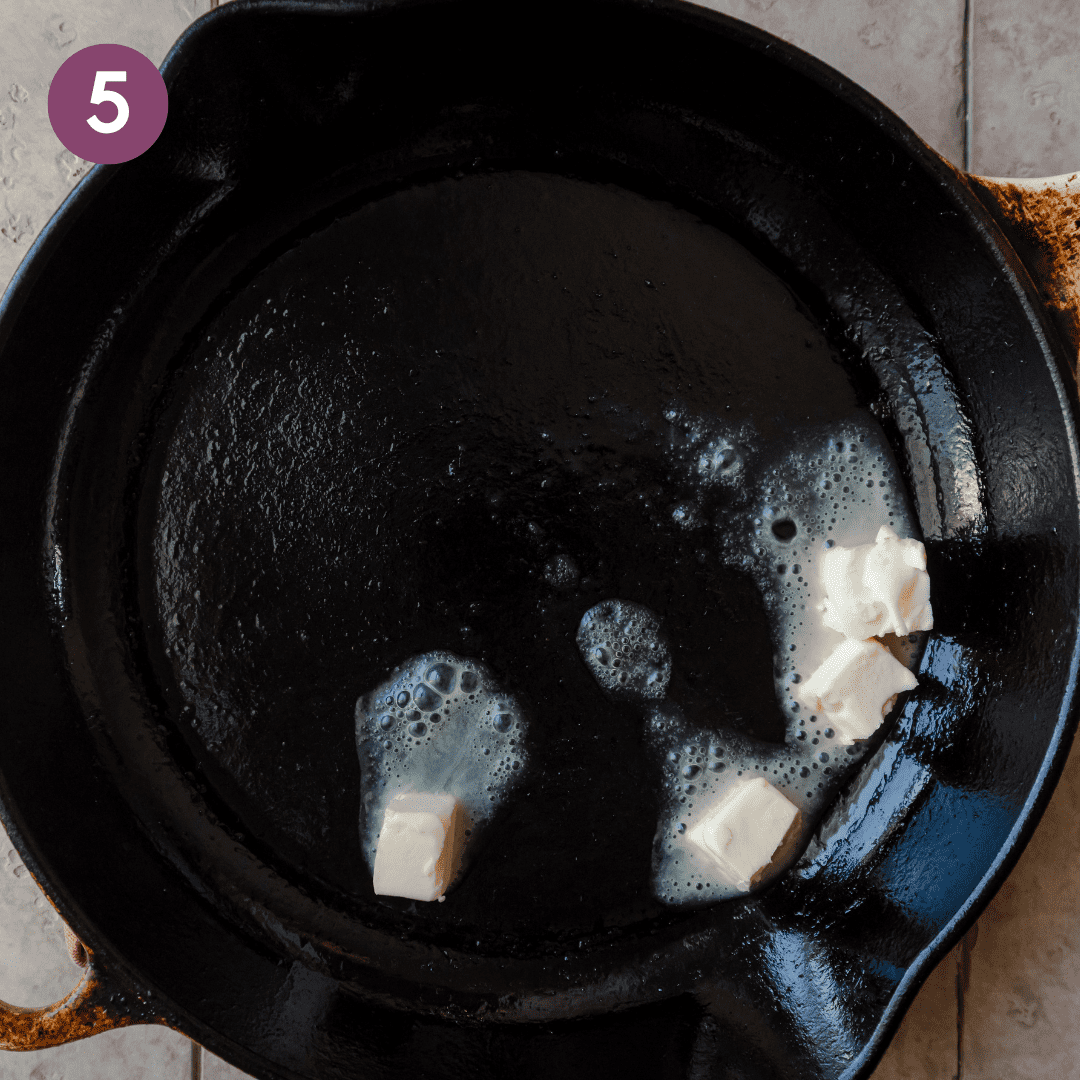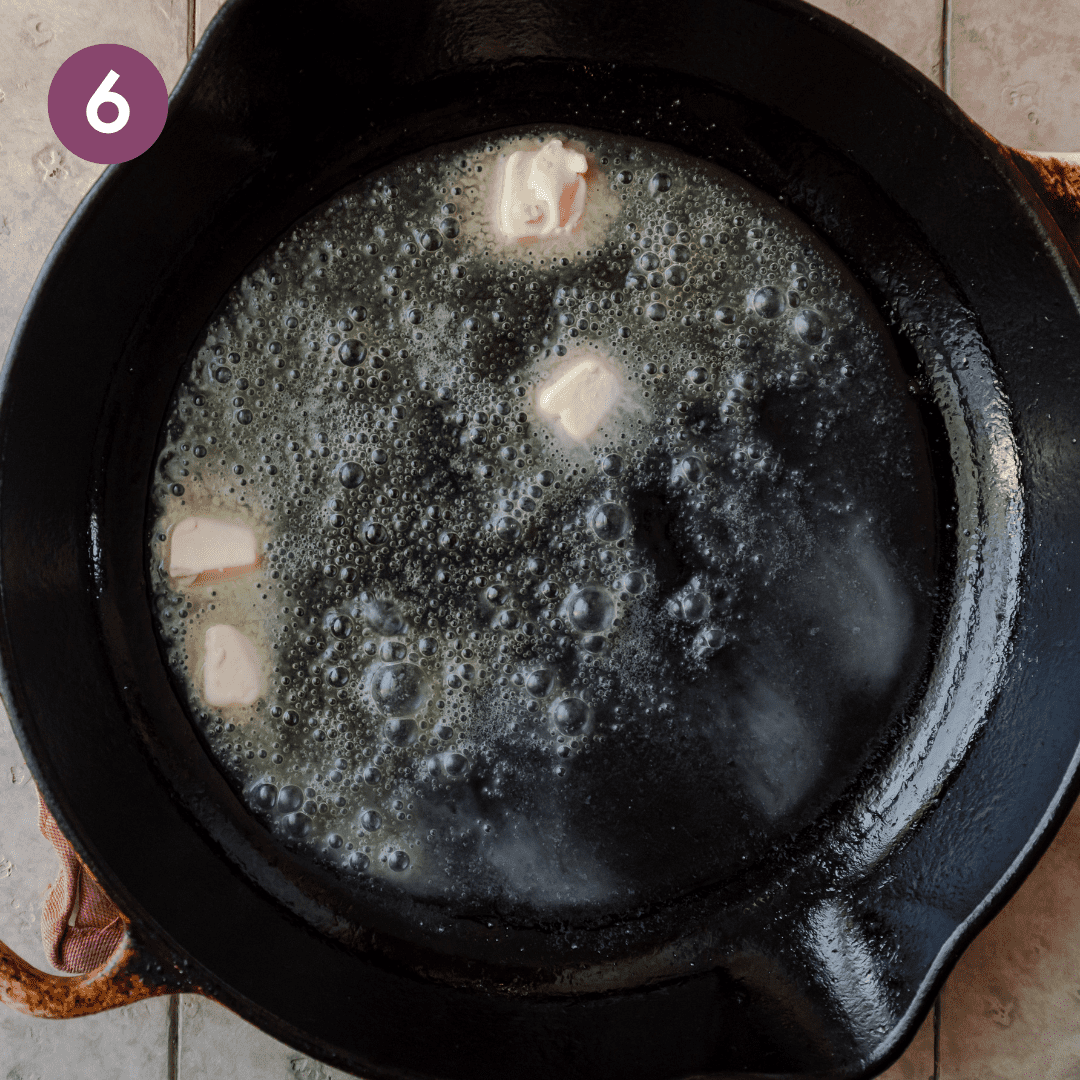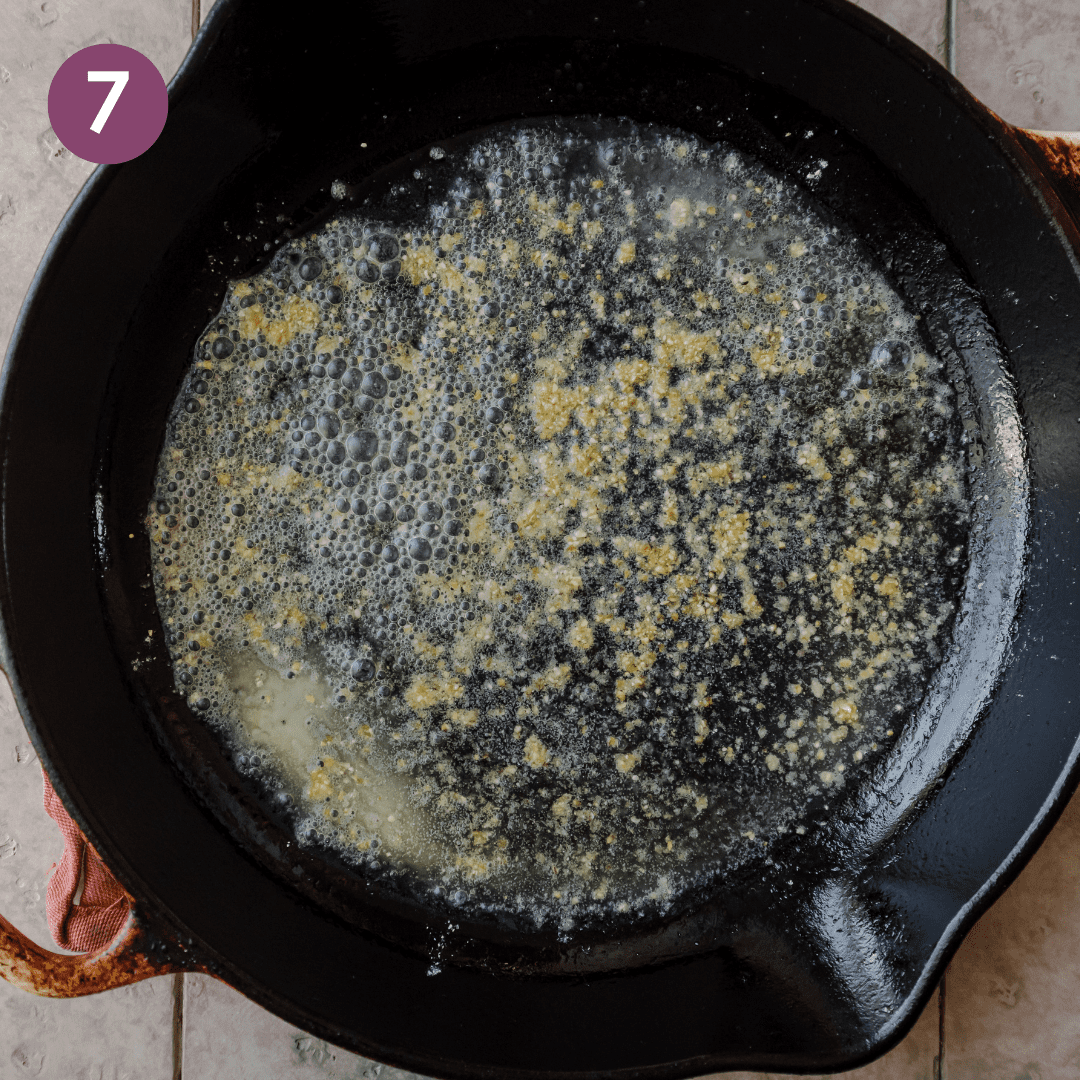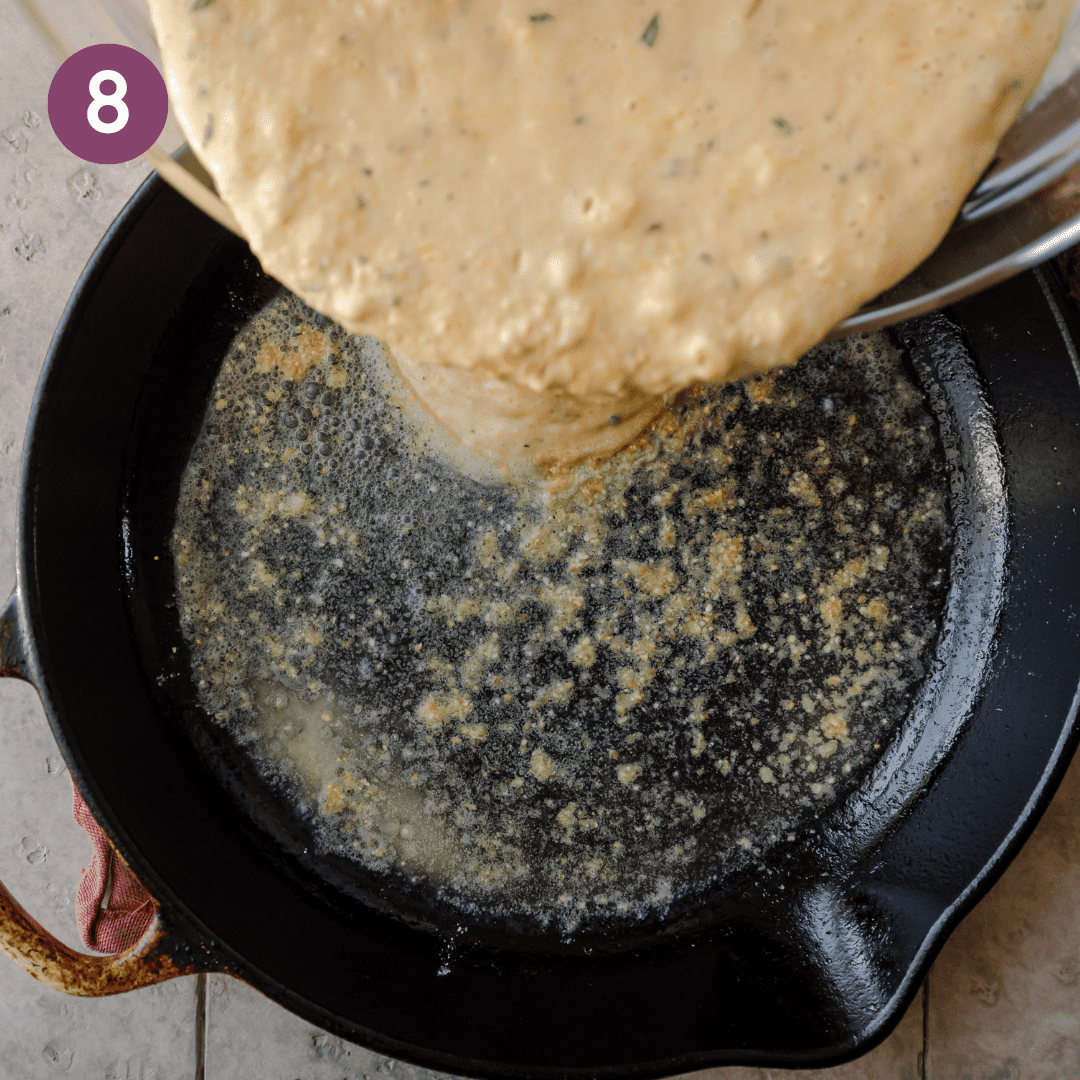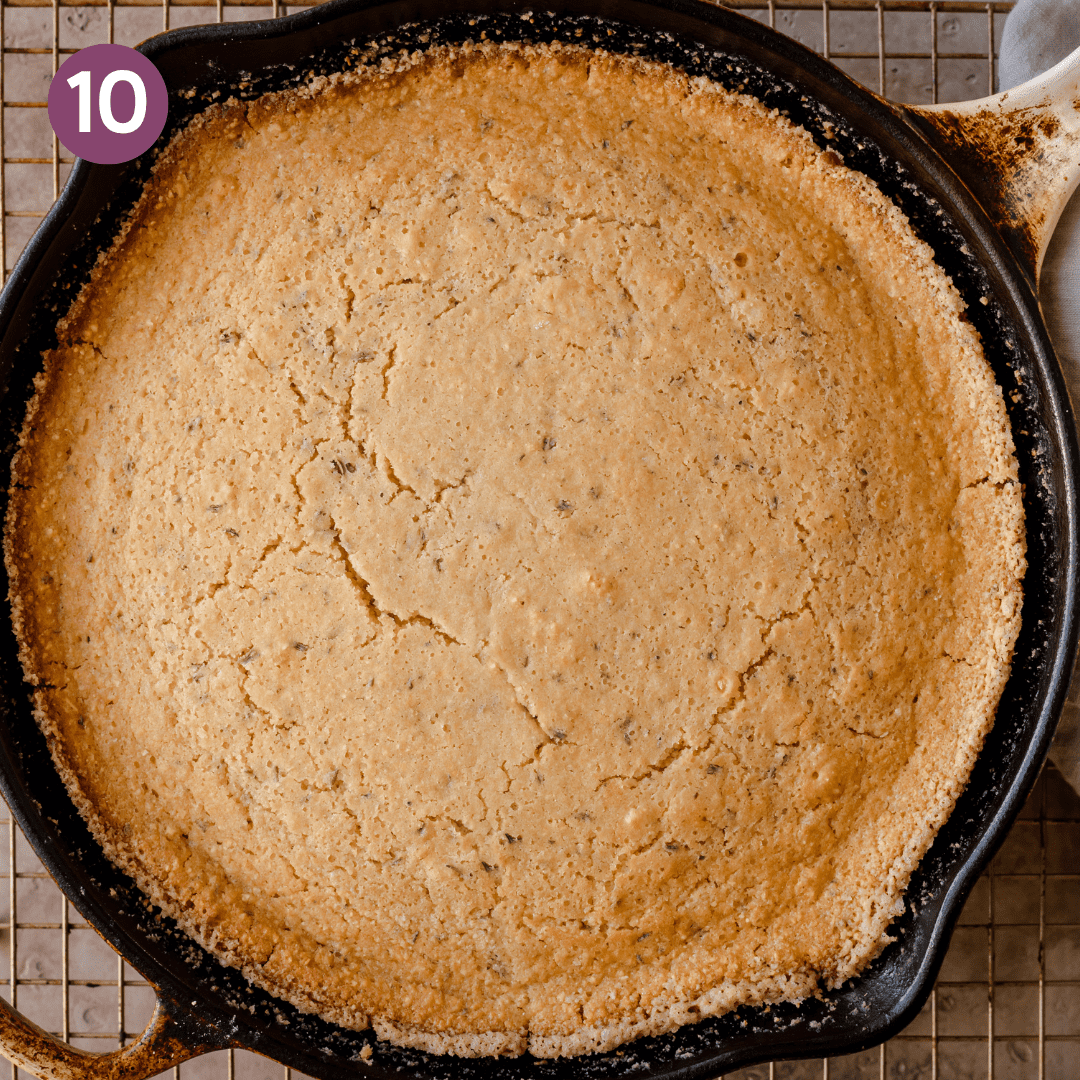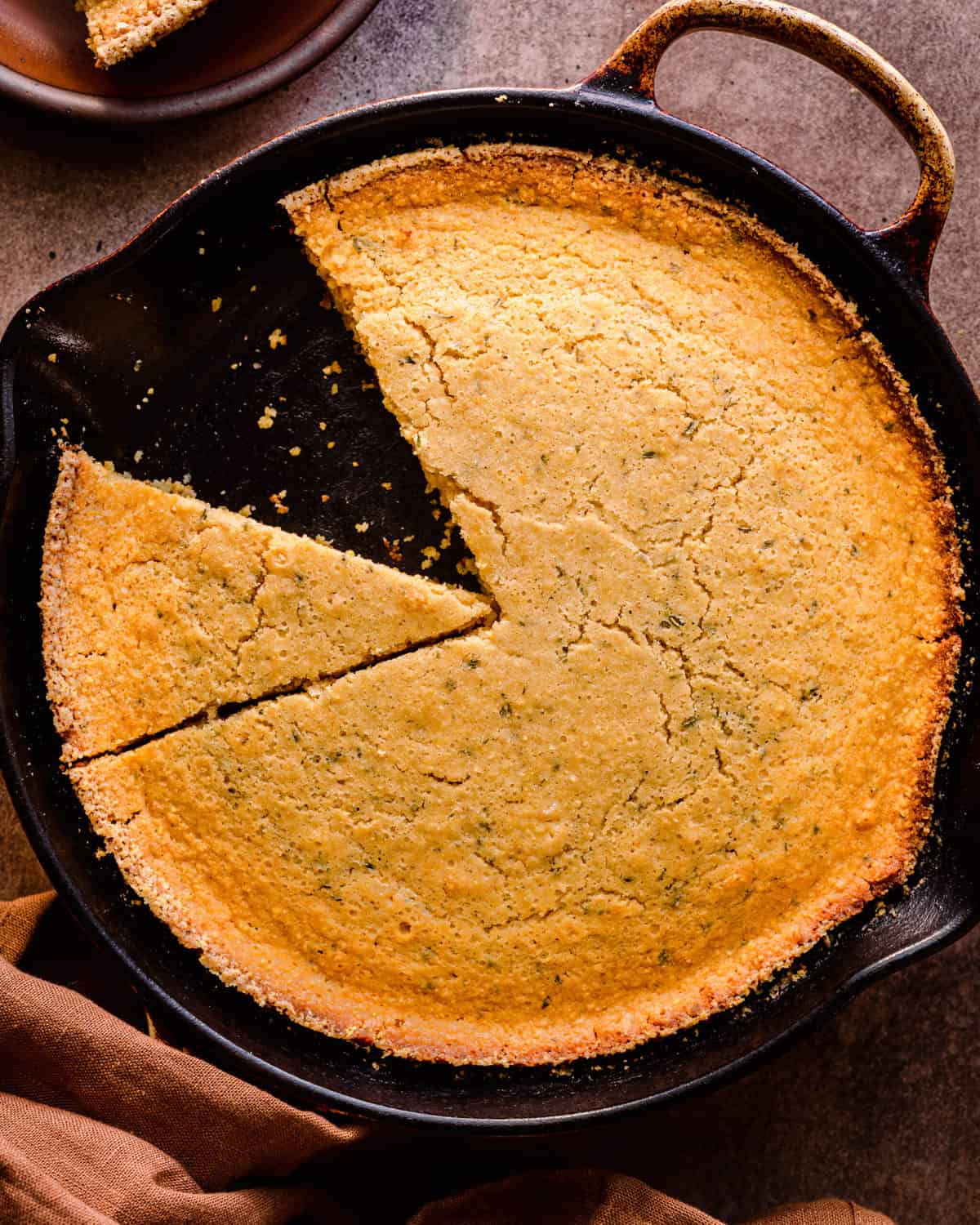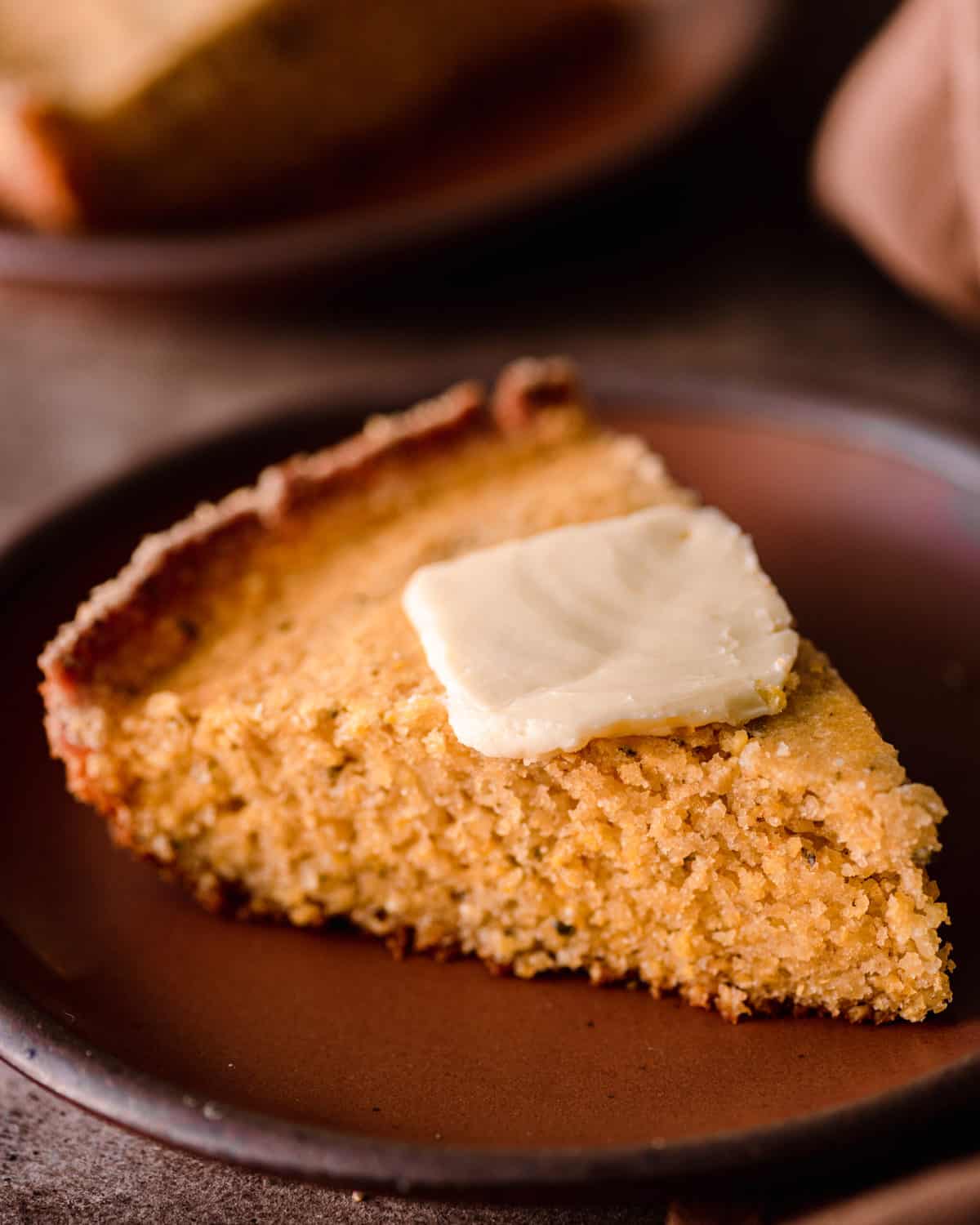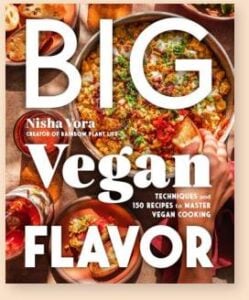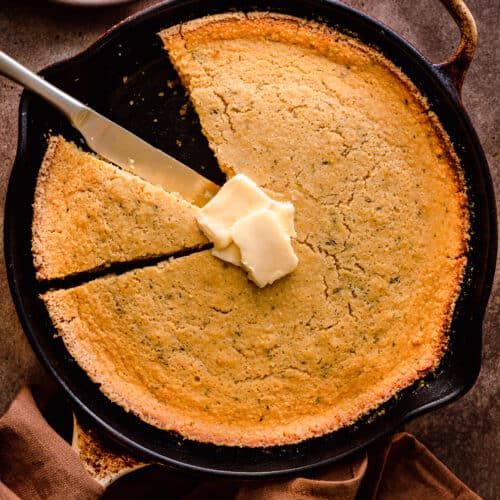You see, there are a lot of of mediocre cornbreads out there that taste like mild-flavored corn cakes.
Why this recipe works
After doing a serious deep dive on cornbread—including days of research on traditional Southern cornbread, watching endless Youtube videos, and testing this recipe 20 times—here’s what I learned about making an epic vegan cornbread.
Crispy crust and edges
Cornbread is all about the crispy crust, and IMO, it’s non-negotiable. To achieve this, I do three things. (1) Pour the batter into a sizzling hot skillet to kickstart the crunchy crust; (2) Add vegan butter to the hot pan + a dusting of cornmeal to enhance the crispy edges (and for that buttery taste); (3) Bake in a cast iron skillet for deeply golden edges and a caramelized crust.
Buttery and moist, not dry
To avoid the dry texture common in many vegan cornbreads (the kind that makes it difficult to swallow), this recipe does a few things. (1) Adds a fair amount of vegan “buttermilk” (full-fat oat milk mixed with apple cider vinegar); (2) Mixes agave nectar and brown sugar, which have more moisture than white sugar; (3) Mixes olive oil (adds lots of moisture) and vegan butter (which brings that essential buttery taste).
Cornbread, not corn cake
Many popular cornbread recipes that show up in Google use about a 1:1 cornmeal:flour ratio. But, most traditional Southern cornbread recipes use significantly more cornmeal than flour.
In my tests, I found that the popular recipes which used more flour than cornmeal resulted in cornbread with (1) a diluted corn flavor and (2) a cakey texture (e.g., they felt like corn cake).
So this recipe uses a 2:1 ratio of cornmeal to flour, which (a) helps the corn flavor shine and (b) produces the classic cornbread texture: it crumbles a little but still holds together; it’s moist but has a slightly grain texture from the corn grits.
Ingredient notes
Vegan butter. Traditional cornbread has a rich buttery flavor. Luckily, that can be easily replicated with vegan butter. I like using Earth Balance buttery sticks, but they also make a soy-free version if you need that.
Substitute? The vegan butter takes this cornbread over the top in a way that oil alone cannot, so please don’t just use oil instead!
Olive oil. Oil brings more moisture than butter alone, so I use a mix of olive oil and vegan butter here. The combo makes this cornbread perfectly moist.
Substitute: You can sub olive oil with a neutral-flavored oil if you prefer.
Oat milk. Oat milk does a great job at browning baked goods, and the fat content helps compensate for the generous amount of fat used in classic cornbread. I like using full-fat oat milk (Oatly brand or Califia extra creamy oat milk) for the best texture.
Substitute: Soy milk or cashew milk would probably work too, but I haven’t tested those.
Apple cider vinegar. When mixed into plant milk, it acts as a vegan buttermilk substitute. The acidity helps tenderize the cornmeal.
Brown sugar + Agave. These add subtle sweetness to complement the corn flavor and moisture.
Substitute: You can try coconut sugar or cane sugar for brown sugar, but it may have a tad less moisture.
Flour. You need some flour to bring structure to vegan cornbread, as eggs can’t do the heavy lifting. But not too much.
Stone-ground cornmeal. Stone-ground cornmeal is ground between slowly moving stones, so it retains the corn hull and germ. This makes for cornmeal with excellent texture: tender with pleasant crunchy bits of corn grit throughout.
I do not recommend using standard supermarket boxed cornmeal, which is industrially processed in steel mills. The degermination process makes the kernels lose some of their fat content and moisture, leaving you with cornbread with a uniform texture, muted corn flavor, and a less moist crumb.
Tip: A widely available option is Bob’s Red Mill medium-grind stone-ground cornmeal.
Step-by-step instructions
In a large bowl, whisk together the cornmeal, flour, salt, and baking powder. Make a well in the dry mix. Add the buttermilk, olive oil, melted vegan butter, brown sugar, and agave nectar. Gently mix with a whisk, and do not over mix. The batter will have some lumps. Fold in the chopped fresh rosemary. Allow the batter to rest for 10 minutes (or up to an hour). While the batter rests, heat a 9 or 10-inch cast iron skillet in the oven at 400ºF/204ºC for 10 minutes. Remove the hot pan from the oven and 2 tablespoons of vegan butter. Once it melts, dust lightly with cornmeal. Slowly pour the batter into the hot pan (avoid pouring it quickly all at once). Bake for 25-28 minutes, until the top is golden brown and a toothpick inserted in the center comes out clean. Cool on a wire rack for 15-20 minutes, then slice and serve warm.
Tips for making the best vegan cornbread
Hydrate the batter.
Allow the cornbread batter to rest for just 10 minutes (while the skillet heats up in the oven), or up to an hour. This hydrates the cornmeal, making the crumb more moist and tender. This is important because cornmeal, especially larger-grained cornmeal made with stone-ground grains, needs more hydration than flour.
Don’t skimp on the fat.
For cornbread that is perfectly moist, slightly dense and incredibly buttery, you need a decent amount of fat (otherwise, you end up with dry cakey cornbread that’s hard to swallow). Here, I us a combo of vegan butter, olive oil, and oat milk. I can’t vouch for this recipe if you alter those ingredients.
Just a little sweet.
This cornbread is subtly sweet and is meant to be eaten as a side dish, either plain with a pat of vegan butter, or alongside savory foods. It’s not a cake or dessert. But, if you want additional sweetness, there’s a recipe for a maple butter topping in the recipe card. Or, you could spread some jam on top!
A rustic batter + patience
When mixing the batter, use a whisk and don’t be worried that the batter has lumps. The bread won’t be lumpy. And try to pour the batter fairly slowly; if you pour the batter quickly, it will cause the hot butter to pool up at the surface.
Rosemary or not.
I add fresh rosemary to the batter, which adds so much interesting flavor. Many of my taste testers particularly loved this addition. If you prefer a classic flavored cornbread, just omit the rosemary. If you love the corn-rosemary flavor combo as much as I do, be sure to try the Sweet Corn Rosemary Cake in my cookbook, The Vegan Instant Pot Cookbook.
What to serve cornbread with
You can serve cornbread plain or with a pat of softened vegan butter (we eat it for breakfast like this all the time). Or, if you like it sweeter, with some jam or maple butter (maple butter recipe is in the recipe card).Cornbread is also excellent served with savory dishes. Some favorite ideas:
Vegan Chili (honestly the best pairing ever)Any kind of hearty stew like this White Bean Stew, Lentil Soup, or Gambian Peanut StewCreamy pureed soups like this Butternut Squash SoupAs part of a BBQ plate, like with this BBQ tempeh Creamy or stewed beans, like the Rosemary Garlic White Beans or Frijoles from my cookbookWith vegan sausage and greens or roasted cabbage
That’s everything you need to know about how to make incredible vegan cornbread! I hope you’ll love this recipe as much as we do. If you do, please rate and review the recipe below :)
Sources referenced in writing this post:
I referenced a number of posts in writing this post. If you’re interested in learning more, please do give them a read:
Big Vegan Flavor
Techniques and 150 recipes to master vegan cooking.
Cornmeal is baked into the history of the Americas… Rebecca Powers for the Washington Post. The real reason sugar has no place in cornbread. Robert Moss for Serious Eats.Mistakes you’re making with your cornbread. Mashable. Southern Cornbread recipe from Grand Baby Cakes.There’s more than one way to make ‘authentic’ cornbread. Vaughn Stafford Gray for Life Hacker. The secret to bona fide southern cornbread is in the cornmeal. Daniel Gritzer for Serious Eats.
Happy baking!
